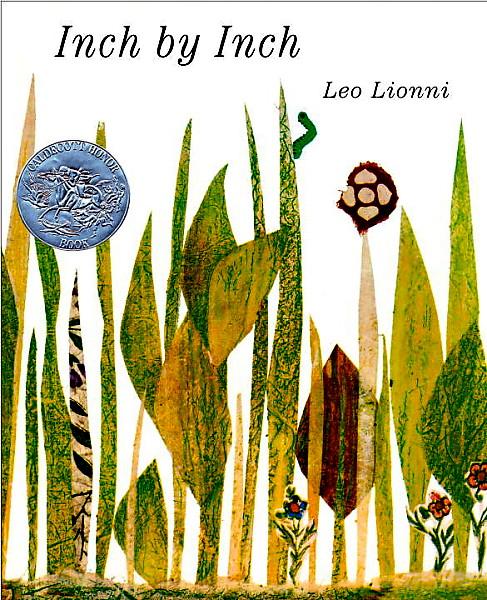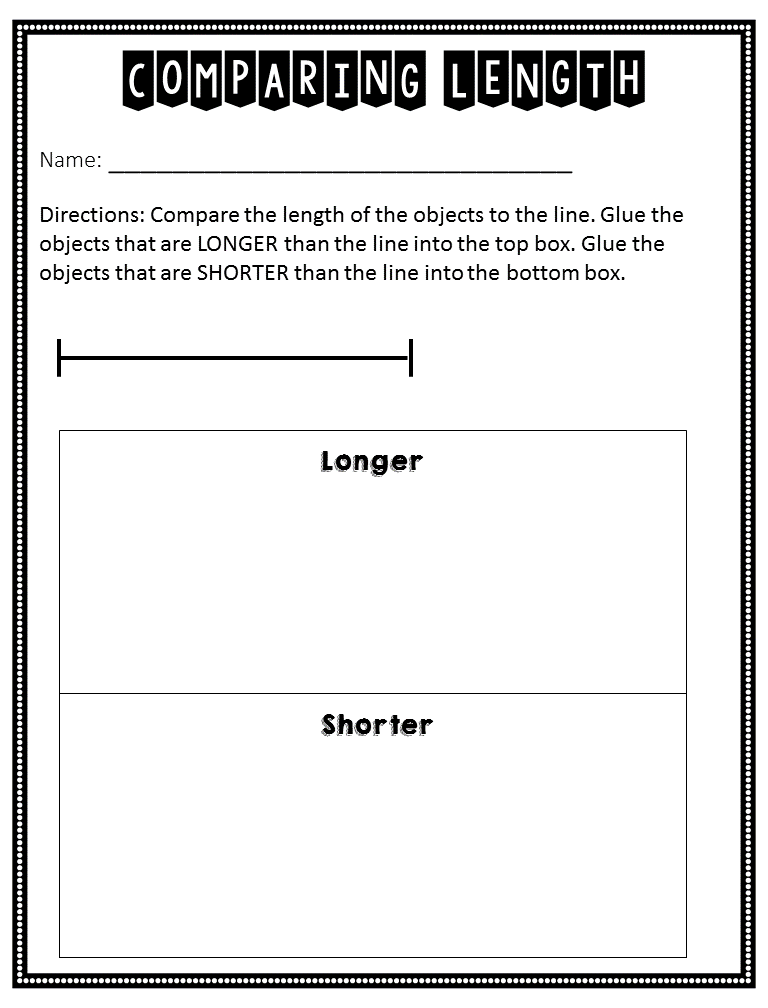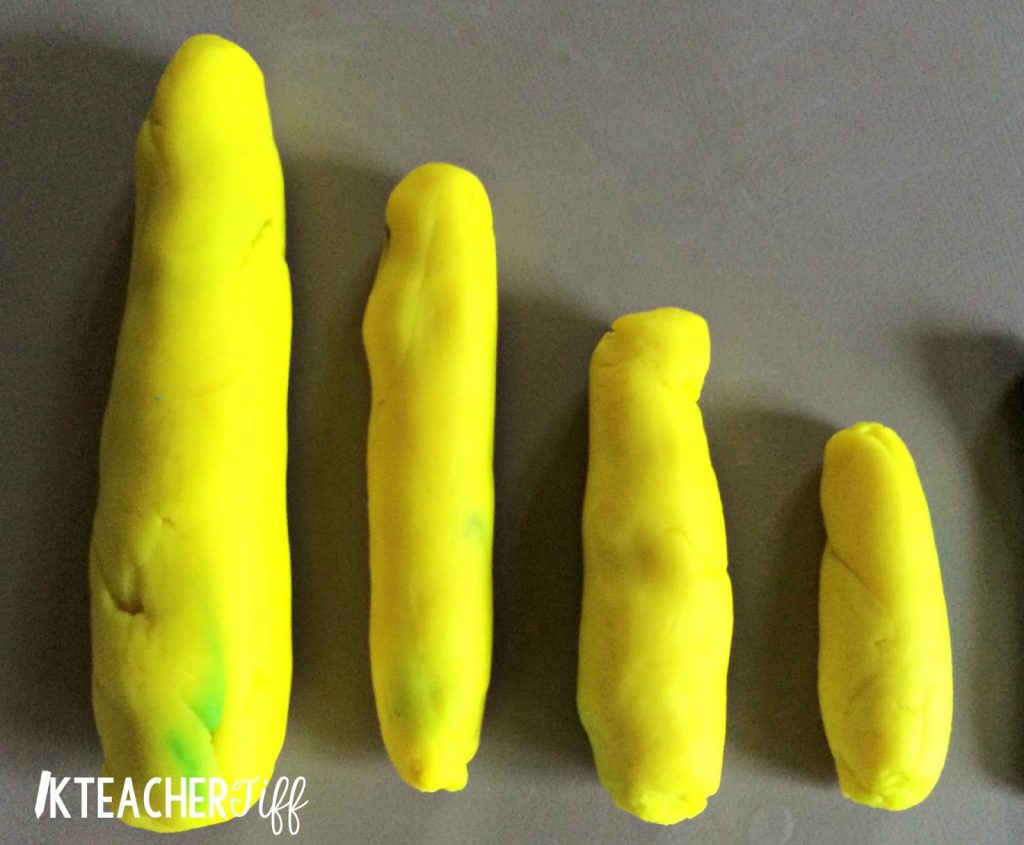Hello there friends! I hope you’ve had a fantastic weekend! Mine lasted four days because of a snow storm on Thursday and Friday. PLEASE, no more snow! I am so ready for spring that I feel physical anger every time I glance at the snow outside. Slight exaggeration, but I am over it. I want it to be HOT. 90 degrees is fine with me.
Anyhow, today’s post is all about teaching measurement in kindergarten. We just finished up this unit, so I thought I would share some of my favorite resources for teaching measurement and some activities we do. First, here are some of my favorite books for teaching measurement. What books do you like to use to teach measurement? Let me know in the comments–I am always looking for good books to go along with math skills!
Is it Larger? Is it Smaller? by Tana Hoban. This is a great book for looking at attributes and making comparisons. It’s a good introduction to our measurement unit.
The Long and Short of It, by Cheryl Nathan and Lisa McCourt– Another great book for making comparisons. Each page compares the body part of two animals to an everyday object.
How Big is a Foot? by Rolf Myller- The perfect book for exploring why we use standard units of measurement. When we read this book, we always bring it to life by using blocks to create a bed for one of our students. First, I use my feet to measure the length of the student on the floor. We record the measurement. Then, I have one of my students (usually one with tiny feet) use their own feet to measure out the space for the bed, while the other students help mark and build the bed. When the student we made the bed for does not fit, we have a great discussion about why.
Inch by Inch, by Leo Leonni. The crafty inchworm proves his usefulness by measuring birds to avoid being eaten. Until the nightingale threatens to eat him (unless he measures his song). The inchworm measures the nightingales song until he measures himself to freedom. We then use inchworm sticks to measure objects around the classroom. You’ll see more below!
Looking at Attributes/Making Comparisons
We introduce the unit with some sort of problem to tie it to a real-world application. Mrs. Brosig got two pairs of pants from the store. Which pair do you think will fit? (I showed a pair of my hubby’s long pants and a pair of my own). Why do you think so? A simple activity like this makes a good jumping off point for why looking at attributes such as length is important.
We also do some sort of scavenger hunt. We give the students unsharpened pencils (or a piece of a sentence strip, anything works) and have them find something around the room that is longer and something that is shorter. The next day, my student teacher created a more in-depth scavenger hunt. The students worked in partners to find something longer and shorter than a target object. I created my own version here for you to use. Click on the image below to download the freebie!
In this next activity, the students were given little baggies of pipe cleaners that were cut to different lengths. They had to compare the pipe cleaners to the line at the top of the sheet and glue them into the appropriate box. You could also do this with string, straws, or strips of paper. There is another freebie below!
Here is an easy activity for ordering length: Have the students make 4-5 snakes and order them from shortest to tallest, then tallest to shortest.
Once we got into measuring with nonstandard units, we had all sorts of fun measuring around the classroom. They love to measure their footprints. We measured using paperclips, unifix cubes, pennies, inchworms, and more!
Here we are using my measurement math stations (you can get them HERE in my TpT shop). The kids love these and they provide great practice!
Below you can see our inchworm measurement. This also comes in my measurement stations. The students measure different objects around the room using the inchworms and then record the objects and the measurement on the recording sheet.
In addition to the stations, we showed off our measuring skills further in our interactive notebooks for measurement. Here are some pictures from the pack. You can get it HERE! By the way, I added four pages on weight…after I made this little preview.
And now, onto weight. We started out by exploring heavy and light by feeling and comparing objects.
Then, we compared two objects at time using our balance scales. After that, we measured objects using pennies and cubes.
Here is a little balance scale freebie to use with your students! They draw the heavier item in the lower bowl and the lighter object in the higher one–then they write their observation! (I know, you really needed that explained. It’s the teacher in me.)
I hope you enjoyed reading about some of these activities! Thanks for coming by!



















Perfect timing Tiffany! We are starting our nonstandard measurement unit on Wednesday. Thanks for all the bright ideas!
Lauren
Hey I am impressed by this article! Thanks a lot for these wonderful ideas and for sharing the freebies as well for Phoenix pre-k! I pinned some of these from it just for future reference. Amazing article!
These are superb photos from your fun classroom activities. For more creative worksheets, rhymes, textbooks and painting printable for kids you must visit http://www.kidsfront.com/math-activity/1.worksheet.html. It is a helpful website that lets you use preschool education material for free.